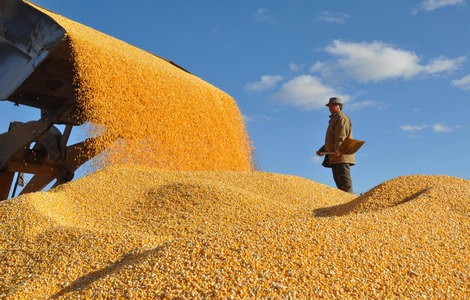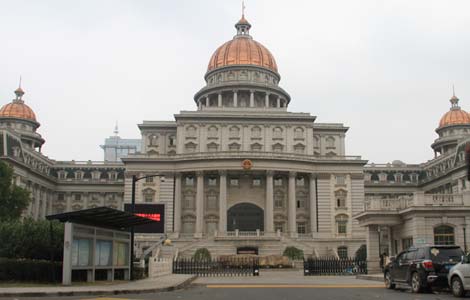
Rising output 'shows effect of policy easing'
A key indicator of factory activity saw manufacturing contracting at a slower pace in July from the previous month. This could signal further easing by the government in the next six months, analysts said.
There was further good news as a sub-index to the HSBC flash purchasing managers' index (PMI) recorded a rise in output.
The PMI gauges manufacturing activity and it rose to 49.5 from 48.2 in June. This still represents a contraction as a reading above 50 indicates expansion.
However, a HSBC sub-index showed that manufacturing output jumped to 51.2 this month from 49.3 in June, a nine-month high, the main force boosting the PMI.
"The effects of policy easing are being transmitted to the economy and reinforces our view that growth has bottomed in the second quarter at 7.6 percent and will rebound in the third quarter to 8.1 percent," said Zhang Zhiwei, chief economist in China for Nomura Securities.
Gross domestic product fell to the slowest rate in three years in the second quarter, prompting the central bank to take the rare step of slashing interest rates in June and July.
It has also cut the amount of money banks must keep in reserve three times since December.
The government has vowed to take further measures as stabilizing growth is a priority.
As the PMI still shows contraction and demand remains weak, "this calls for more easing efforts to support growth and jobs'', said Qu Hongbin, chief economist in China with HSBC.
Qu expected that the consumer price index may continue to decline to less than 2 percent in July, which will allow the government more room to further loosen policies.
"A greater improvement in growth is expected in the coming months when these measures fully filter through," he said.
Further easing monetary conditions might start with another reduction in the bank reserve ratio, to inject liquidity into the economy, according to Qu.
"This, plus fiscal measures and the opening up of more sectors to private investment, should help to generate a meaningful improvement in growth in the coming months," he said.
While the sub-index showed an increase in output, employment deteriorated to its worst level since March 2009, with a reading of 47.4, down from June's 48.8, the fifth consecutive monthly fall.
Meanwhile, new orders continued to contract but at a slower pace, with a reading of 48.9 in July, against 47.2 in June.
The HSBC flash index is based on purchasing manager survey responses, which are to be published in full in about a week.
Hu Xudong, manager of Zhejiang Fuyang Jin'aobo Shoe Co, was worried about shrinking profits.
About one-third of workers in his company have been let go after a production line was shut down in March.
"Our exports are about the same over the last six months but costs have risen," he told China Daily.
A report from JPMorgan Chase said that the most dangerous threat to the world's second-largest economy could be declining corporate profits. This will deliver a double
blow of reducing investment and weakening domestic demand.
"Most small and medium-sized companies are struggling with reduced profits, due mostly to the slump in Europe," said Guo Junwei, the owner of a clothes manufacturer in Taizhou, Zhejiang province.
Guo added that cutting down the number of employees every three months is the most direct way to reduce labor costs if orders don't improve quickly.
More job losses are likely in the coming months, said Huang Yiping, chief economist in Asia with Barclays Capital.
"It has not been until this month that reports of job losses and migrant workers returning home have started to emerge," Huang said.
Contact the writers at chenjia1@chinadaily.com.cn and yuran@chinadaily.com.cn
Shi Jing in Shanghai contributed to this story.







